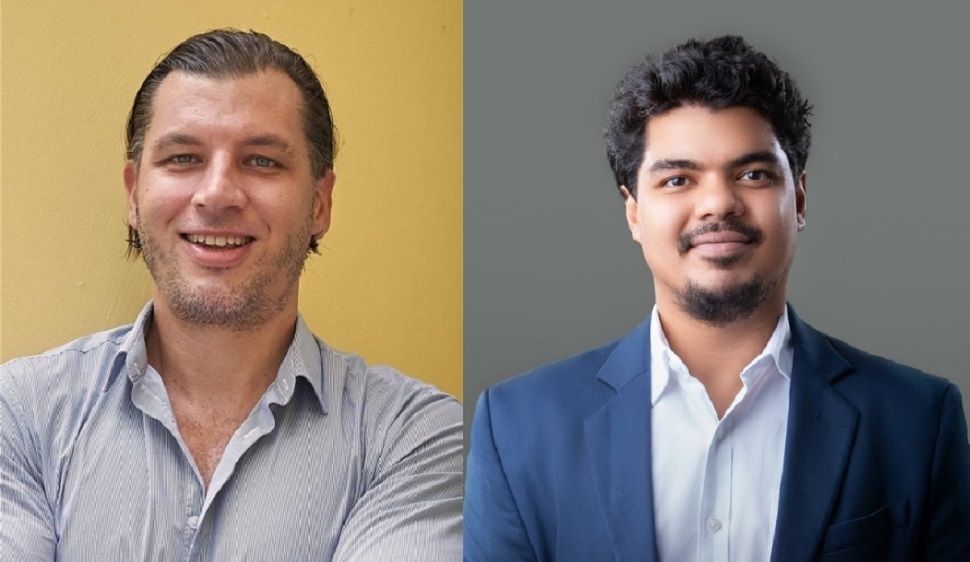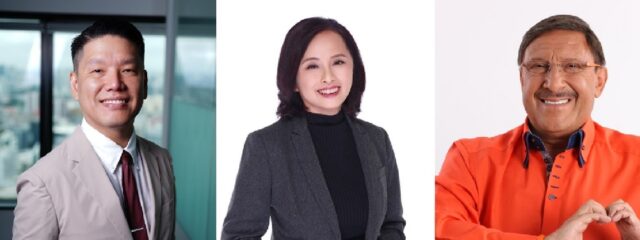
Mark and Comm, a strategic communications and PR agency, in collaboration with the Public Relations and Communications Association Asia Pacific (PRCA APAC), hosted a regional webinar for Sri Lanka titled “PR in the Age of Disruption” on April 28.
The session, part of Mark and Comm’s ‘The Collab Room’ initiative, brought together leading PR experts to discuss the evolving landscape of communications. The event featured insightful discussions on navigating disruptions in the PR industry, with a focus on agility, digital integration, and authenticity.
The webinar featured industry experts such as Jeremy Seow, Regional Chief Operating Officer and Head of Client Experience, APAC at Allison, and Chair of PRCA APAC, along with Maureen Tseng, Managing Director of Southeast Asia at The Hoffman Agency, and Maxim Behar, CEO and Chairman of the Board at M3 Communications Group, and moderated by Ed Burleigh, Head of PRCA APAC.
In the opening remarks, Thanzyl Thajudeen, Managing Director of Mark and Comm, emphasized that today’s disruptions extend far beyond technology, encompassing geopolitical shifts, societal movements, generational change, AI, and climate events. He went onto outline three key shifts defining this new era: a move from control to collaboration, from broadcast to belief, and from strategy to speed, stressing the need for PR professionals to be agile, purpose-driven, and resilient in the face of uncertainty.
He also urged professionals to seize this moment not just to adapt but to lead. He stressed that real impact comes from being future-facing—investing in skills like AI and digital storytelling—while remaining deeply human-centered, with empathy and ethics at the core. At both Mark and Comm and through his work with PRCA APAC, he’s observed that those who thrive are also bold, unafraid to challenge norms and lead authentic conversations. He closed by inviting participants to reflect: Are we merely reacting to disruption, or are we shaping the future of PR with intention and purpose?

Jeremy Seow, Regional COO and Head of Client Experience, APAC at Allison, and Chair of PRCA APAC, in his keynote presentation highlighted that the industry is going through a massive reset and transformation. ‘‘We are looking at consolidations of some of the largest PR networks such as K&K and Burson, Omnicom, and IPG for instance, driven by the need to be more agile and integrated. We are seeing shifts from scale to specialization. Global mid-size and independent agencies are thriving as they provide more insights-driven solutions. Brands are also rethinking the role of agencies, expecting them to be more of strategic partners. It’s about thinking smart, acting fast, and deliver results that really matter.’’
‘‘Clients’ expectations are evolving drastically from covering to influence, owned platforms over traditional media, and navigating misinformation. Multi-channel storytelling, ESG communications and thought leadership for example are not options anymore, they’re crucial to building credibility. There is also the AI imperative. It has really changed the way we function and approach, demanding the need to move from tool to core competency, putting together insights-driven strategies not just execution, and blending AI efficiency with creativity.’’
Jeremy also stressed the shifting work models, highlighting that hybrid working is here to stay and that the emphasis is more on impact-driven productivity rather than attendance, and the need to balance creativity, collaboration and autonomy. Agencies and in-house teams too will continue to compete for the same pool of digitally-fluent professionals, and future training is mostly about AI literacy. The takeaway points were to build influence and not just awareness, prioritize resonance over reach, making AI a working partner and not a future concept, measuring what matters, and staying curious, relevant and humane.
When asked about how the role of PR has evolved in the digital-first era and what shifts he’s seen in strategy, Jeremy said that people no longer consume content from top to bottom. They skim, scroll, and react, which means PR is now about creating content that resonates quickly and emotionally. Audiences aren’t passive anymore; they remix, respond, and take part in shaping the narrative. As a result, PR professionals are no longer just pitching stories, they’re navigating cultural shifts and emotional responses.
Jeremy emphasized that today’s PR professionals must integrate tools like generative AI and data intelligence platforms into their daily workflows to stay competitive. In an environment where global conversations shift rapidly, the ability to derive fast, relevant insights is more critical than immediate action itself. He stressed that agencies and in-house teams that fail to embrace these technologies risk becoming outdated. The true edge lies in using these tools not just for monitoring but for predicting trends, understanding evolving narratives, and staying attuned to the dynamic media and stakeholder landscape.
When asked how PR professionals can thrive in a rapidly destabilizing world, Maureen stressed the importance of adaptability, speed, cultural awareness, and critical thinking. She noted that PR is no longer about just media coverage or relationships with journalists—it’s now about staying close to real-time insights, using tools like AI and social listening to guide clients through uncertainty.
PR pros must be ready to shift strategies frequently, understand what’s happening on the ground in different markets, and bring culturally relevant, well-informed points of view to the table. She posed powerful questions: Are we adapting fast enough? Are we critically using tech like AI? Do we truly understand the zeitgeist and local nuance? Are we flexible enough to update plans monthly, not quarterly? And above all, are we acting as guardians of truth in an era of misinformation and deepfakes?
Maureen emphasized that in a digital-first, borderless world, PR professionals must prioritize cultural nuance and digital fluency. Especially in a fragmented and nationalistic region like Asia Pacific, understanding the unique geopolitical and cultural dynamics of each market is essential. At the same time, professionals must be adept in using social media, short-form video, and emerging AI-powered creative tools to craft relevant, engaging content. She highlighted that younger team members often excel in this space, and encouraged more experienced professionals to collaborate and learn from them to effectively connect with diverse audiences and build trust across geographies.
She added that PR professionals remain the guardians of storytelling, which is deeply ingrained in the DNA of the profession. She pointed out that while the medium of communication has evolved, from social media to traditional channels, the focus must remain on crafting stories that resonate with audiences. PR professionals should understand the customer journey and tailor content for every stage, from awareness to advocacy. Consistency across mediums, while staying true to the message, is key. Maureen also stressed the importance of building goodwill with target audiences and leveraging marketing insights to create effective campaigns that resonate and build trust.
In a world overwhelmed by misinformation and AI-generated content, Maxim described this moment not as a change, but as a revolution for the PR profession, driven largely by the rise of social media. He emphasized that today, everyone has the potential to be a communicator, which places even greater responsibility on PR professionals to uphold the integrity of content. According to him, the value now lies not in budgets or promotional tools, but in mastering meaningful content. PR professionals must position themselves as content creators and ethical navigators in a world without borders, where local crises can instantly become global due to social media.
To maintain authenticity and trust, Maxim stressed the need for readiness and foresight. In an era of “perma-crisis,” he argued that anticipating and planning for multiple scenarios is key to navigating fast-moving reputational threats. AI, while powerful, poses both opportunities and ethical risks; those who learn to harness it responsibly will thrive, while others may fall behind. He warned that it’s not AI itself that will replace PR professionals but rather, PR professionals who know how to use AI effectively will replace those who don’t.
The session concluded with a Q&A segment, with plans to host similar webinars in the future, including a potential in-person event in Colombo. The Collab Room initiative by Mark and Comm continues to connect local practitioners with global insights, fostering dialogue, collaboration, and professional growth in the PR industry. Through such efforts, Mark and Comm strive to elevate the Asia-Pacific PR sector, helping professionals navigate the complexities of the digital-first era and lead with purpose and impact.



